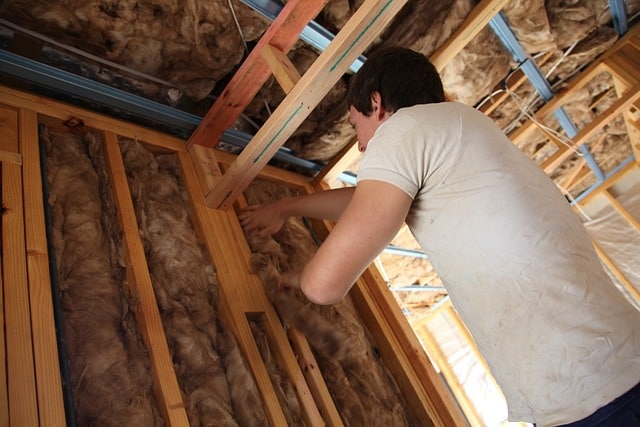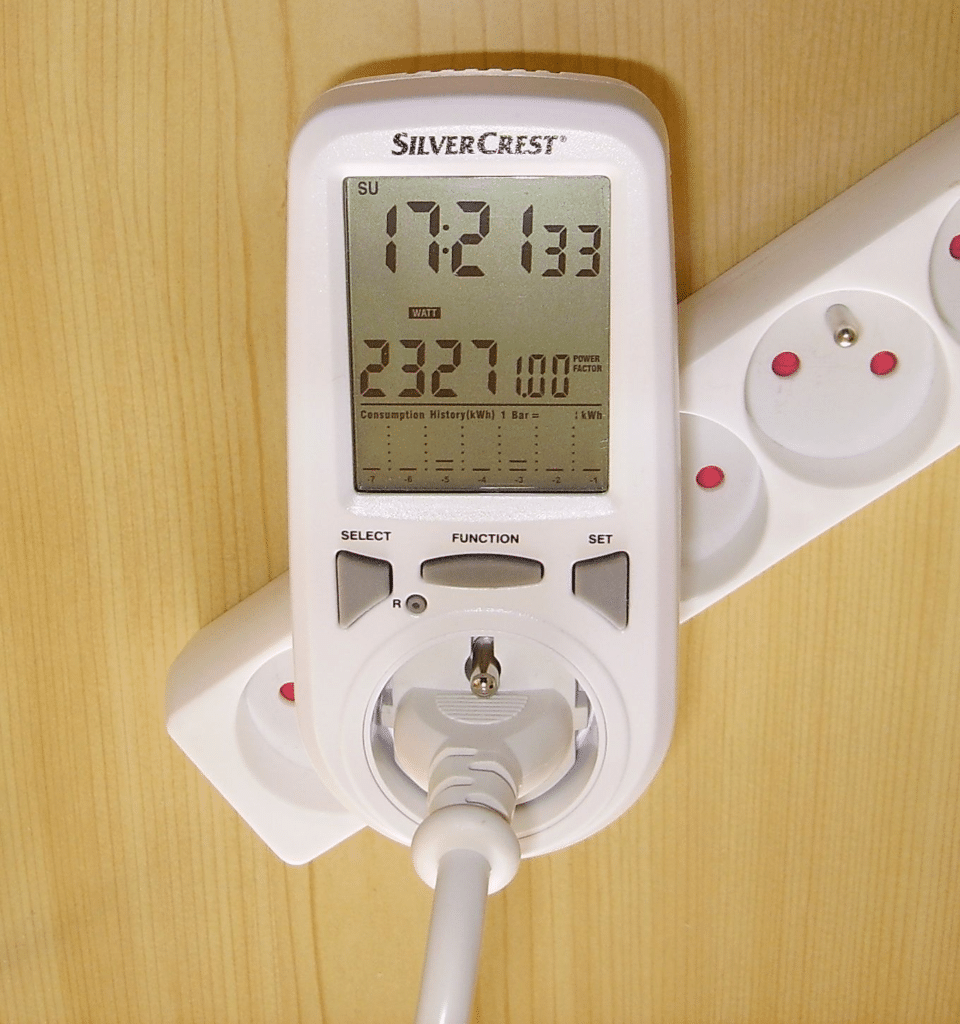Introduction – 6 Step Process
This page details a 6 step process for how to save money on electricity. It is a pretty comprehensive program and you probably don’t want to try all of it at once. But if you find one aspect that interests you, start with that!! We also include a mega list of ways to save on electricity below. Take a look, and we’d be so happy to hear from you in the comments for other ways. If they’re good, we want to add your ideas to our list as well.

Step 1: Compare Your Home’s Daily Electricity Usage to the National Average
To know how to save money on electricity you need to find out how much you’re using in the first place. First, take a look at your home’s daily electricity usage. How does it compare to the national average? If you’re using more electricity than the average person, there’s definitely room for improvement! To find out the average, simply go to the U.S. Energy Information Administration’s website and select your state. Or, an alternative is to take a look at ShrinkThatFootprint’s convenient electricity usage statistics for US residents. Then take a look at your electricity bill from this month, or if your utility offers it, look at the bill online where you might be able to track historical usage for the last 12 months. With these numbers, you get a sense of whether you’re above, at, or below the state-wide average for a house. This gives you a good point of comparison. If you’re above or at the average, then it’s worth looking over comprehensively all your electricity usage and find places to cut or get more efficient.
Step 2: Get An Energy Audit
If you want to really save money on your electricity bill, you should get an energy audit. Energy audits can be performed by trained professionals or by building occupants themselves using a simple checklist. A professional comes to your home and assesses how energy-efficient it is. They can give you specific recommendations on how to make your home more energy-efficient. You can also carry out an energy audit by yourself. Think of it as a systematic process for evaluating how much energy a building or facility consumes and identifying opportunities for energy efficiency improvements. Energy audits are useful because they can help identify cost-effective ways to reduce energy consumption and save money. They can also help raise awareness about energy efficiency and encourage building occupants to take action to improve the energy performance of their facility.
Step 3: Make a Plan to Reduce Your Electricity Usage
Once you know how much electricity you’re using, you can start making a plan to reduce your usage. There are a lot of ways to do this, but some popular methods include these:
- Replacing old appliances with energy-efficient models – cuts down on electricity use with no impact on function
- Adding insulation to your home – big passive savings
- Weatherproofing your home – similar to insulation
- Changing your light bulbs to energy-efficient models – cuts down on electricity as above
- Reducing your water heater temperature or take shorter showers – the latter is a behavioral change
What I find really helpful is also knowing within one single home, the best places to look for savings in terms of what devices or activities use the most electricity and cut from those places first. Again, ShrinkThatFootprint comes to rescue, with a top 10 list of biggest electricity uses in a home. It’ll be no surprise to know that space heating and cooling are among the biggest uses of electricity in an American home. Therefore, small actions like turning down the thermostat by 1 degree or improving insulation to eke out a tiny bit of avoided energy use are all super high impact.
Step 4: Install and Use An Energy Monitor
An energy monitor is a device that displays how much electricity is being used in a home or business. There are many factors to take into consideration when choosing an energy monitor. The most important factor is finding a monitor that is compatible with your energy provider. Many energy providers will offer discounts and additional services if you use their energy monitor, but it is still important to find a monitor that is compatible with your home’s electric system.
To use an energy monitor, you will need to connect it to your electrical panel and any devices or appliances that you want to monitor. The energy monitor will then display the current energy usage of each connected device or appliance, as well as the total energy usage of your home or business. This can help you to identify which devices or appliances are using the most energy and make changes to reduce your energy consumption and save money on your energy bills.
Monitoring your energy usage can help you save money, but it can also help you be more efficient. If you are not using as much energy as you should be, you can make changes to your habits and save money. If you are using too much energy, you can make changes to your habits and help the environment. Energy monitors can also help you stay on top of your energy usage. If you notice that your energy usage is going up, you can make changes to your habits to help you save money.
Step 5: Educate Others About Saving Electricity
The more people that know about saving electricity, the better! You can help by educating yourself and others about the importance of saving electricity. There are a lot of ways to do this, but some popular methods include: writing articles or blog posts about saving electricity, making videos about saving electricity, creating infographics about saving electricity, giving presentations about saving electricity, and teaching a class about saving electricity. In fact, teaching others what you’ve learned is a way to augment your impact on carbon emissions in a multiplicative way. You may be able to save a few thousand kilowatt hours per year through your effort. By teaching others, you will be able to lower electricity use by tens, hundreds of thousands to millions of kilowatt hours per year.
Step 6: Follow Our Mega List How To Save Money On Electricity
1. Educate your family and friends about the importance of saving electricity and make it a family activity.
2. Get an energy audit of your home to identify areas where you can save electricity.
3. Educate your children about conserving electricity and make it a fun family activity.
4. Adjust your thermostat in the winter and summer to save electricity.
5. Use energy-efficient light bulbs throughout your home.
6. Use a programmable thermostat to automatically adjust your home’s temperature when you’re away or asleep.
7. Educate your employees about saving electricity and make it a workplace activity.
8. Install solar panels to generate your own electricity.
9. Use energy-efficient appliances and electronics.
10. Turn off lights and electronics when you’re not using them.
11. Educate your customers or clients about saving electricity.
12. Use energy-efficient office equipment and appliances.
13. Use natural lighting as much as possible during the daytime.
14. Educate your students about saving electricity and make it a school activity.
15. Adjust your computer’s power settings
16. Install compact fluorescent light bulbs
17. Set your thermostat a few degrees lower in the winter and a few degrees higher in the summer
18. Use a laptop instead of a desktop computer
19. Set your computer to “hibernate” or “sleep” when you’re not using it.
20. Wear layers of clothing instead of turning up the heat.
21. Close off unused rooms. Heating and cooling unused rooms is a waste of energy.
22. Set your water heater to 120 degrees. Every 10-degree reduction can save you up to 5% on your energy bill.
23. Take shorter showers. A shower uses about 7 gallons of hot water per minute.
24. Use ceiling fans to circulate air and make a room feel warmer in the winter or cooler in the summer.
25. In the winter, reverse the direction of your ceiling fan so the blades push the warm air down.
26. Clean your light fixtures and lamps regularly to maximize light output
27. Get a tablet instead of a laptop. Tablets use even less energy than laptops.
That’s it. Can you think of any other ways? Add it to the comments below!
Thanks for checking out our program. We are also in the process of putting together some case studies for the blog of people using this method. So if you collect some data or have some tips to share we’d love to hear from you.
Electricity For Businesses
Separately that we don’t cover here is managing electricity usage for businesses. Primarily, the scale of electricity consumption in businesses tends to be much larger, meaning that efficiency measures can lead to significant cost savings. Additionally, businesses often have different peak usage times and require varying types of electrical equipment. A unique feature of electricity management in businesses is the use of Energy Service Agreements (ESAs). These innovations, not available to the residential sector, are instrumental in achieving optimal energy consumption, reduced operating costs, and improved sustainability.

Anne Lauer
Anna Lauer is a writer, gardener, and homesteader living in rural Wisconsin. She has written for Mother Earth News, Grit, and Hobby Farms magazines. Anna is writing a new book about growing your food for free and an ultimate guide to producing food at little to no cost. When she’s not writing or gardening, Anna enjoys spending time with her husband and two young daughters.

